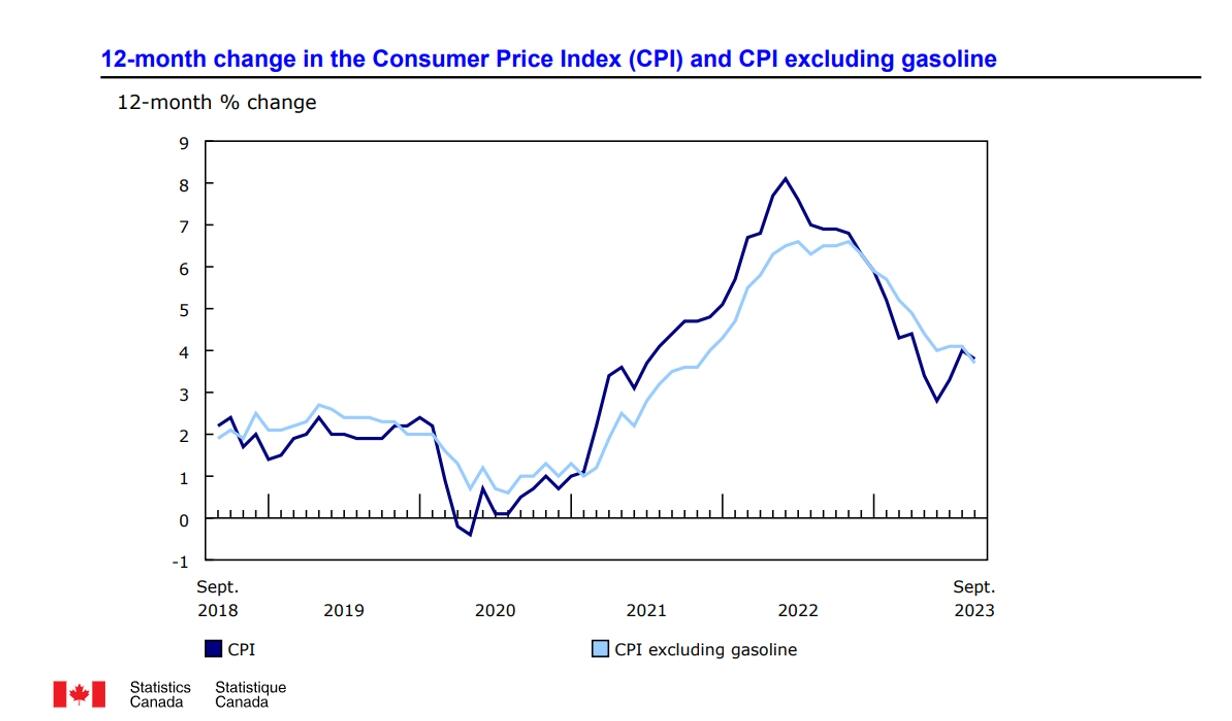
1. Inflationary Adjustments:
Canada's Consumer Price Index (CPI) increased by 3.1% in the past year, exhibiting a marginal moderation from the preceding month.The primary contributor to this deceleration is the noteworthy 6.4% drop in gasoline prices for October, resulting in a 7.8% decrease compared to a year ago.
2. Food Price Dynamics:
Food prices experienced a 5.4% increase over the past year, marking a moderation from the 5.8% annual pace in September.
Despite this, grocery bills remain elevated, with a persistent more than 20% surge over the last three years—a historic high.
3. Escalating Shelter Costs:
Shelter costs, constituting a significant portion of household budgets, rose by over 6% in the past year—twice the overall inflation rate.
Rent, in particular, surged by 8.2%, outpacing the 7.3% increase recorded in September.
4. The Impact on Consumer Spending:
The relentless rise in shelter costs is constraining household budgets, leading to a drop in per capita consumer spending.
Discretionary spending is notably affected, particularly for those dealing with higher mortgage payments.
5. Bank of Canada's Policy Implications:
Economist Tu Nguyen suggests that the CPI report provides the Bank of Canada with a rationale to hold off on further rate hikes.
The cooling economy, evident in the CPI data, allows the Bank to adopt a patient stance and let existing monetary policies influence economic dynamics.
Conclusion:
While inflationary pressures exhibit nuances across sectors, the overarching narrative involves a balancing act between moderating factors like gasoline and escalating elements such as shelter costs.
The Bank of Canada's decision to maintain the status quo reflects a nuanced understanding of the multifaceted economic landscape and a strategic approach to monetary policy in response to evolving economic indicators.
